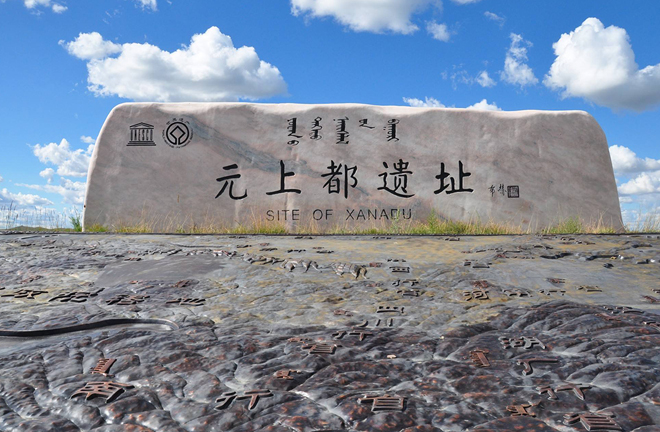Seminar meets to advance international cultural heritage protection

The value of the Site of Xanadu lies not only in the complete preservation of its city wall, but in its influence on the historic culture of China and the world. Photo: FILE
On July 20–21, the international seminar “Theorizing (IM) Material Cultural Heritage in China” was held in Beijing. The seminar aimed to enhance international academic exchange and cooperation among experts and scholars at home and abroad who are concerned with the protection of cultural heritage. At present, China mainly protects its cultural heritage according to internationally recognized norms of protection, but due to China’s own history and national conditions, there are differences between China’s concepts of protection and those of other countries.
A cultural heritage is a precious treasure that should be protected and passed down in any society. Zhu Xinkai, vice president of Renmin University of China, said that as China has more and more of its cultural heritage included in the World Heritage List, the internationalization of China’s cultural heritage protection has become an irreversible tendency, and China has become one of the main international forces in the protection of cultural heritage. At the same time, in the context of economic globalization, the experience of China’s protection of cultural heritage has increasingly impacted the development of international methods.
Wei Jian, director of the Institute of Northern Ethnic Archaeology at Renmin University of China, took the Site of Xanadu as an example to illustrate the value of heritage. He said that the value of the site lies not only in the complete preservation of the city wall and building base structures, but also in its influence on the historic culture of China and even the world. As the capital of the Yuan Dynasty (1271–1368), Xanadu’s influence in the world was spread through the poems of the English poet Samuel Coleridge (1772–1834) and the travel notes of the Italian traveler Marco Polo (1254–1324). In this sense, it can be said that intangible cultural communication has stronger and longer impacts than tangible culture. Therefore, the responsibility of archaeologists is not only to discover the material objects of this ancient city, but more importantly to explore its intangible culture.
The important role of plaster molds in cultural dissemination is often underestimated. Lorenz Baumer, a professor at the University of Geneva, said that plaster molds were the main tool for creating numerous copies of Greek classical sculptures during the Roman Empire. Plaster molds help preserve the integrity of ancient sculptures, and they leave records for those that have not been preserved as well. In the future, we should focus on the neglected role of plaster molds and conduct in-depth research on how to protect and display them.
Rubbing technology refers to copying writings or patterns on cultural relics, such as copying epitaphs on paper with Chinese ink. Rubbings have played an important role in the inheritance of ancient Chinese culture. Hang Kan, a professor at the School of Archaeology and Museology at Peking University, said that the technology was invented very early. Before the advent of modern technologies such as photography, this “fidelity” technology was directly related to the skill of rubbing workers, who had more complex interactions with their employers, compared with other crafts practitioners.
Determining the stages of ancient Chinese history was once a major issue in the field. In the view of Chen Shengqian, a professor of history at Renmin University of China, the essence of finding the stages of Chinese ancient history is the exploration of forms of social organization. In recent years, the theory of materiality has provided a new perspective for answering this question. In the long-term social practices of the ancients, the intrinsic properties of certain materials were gradually integrated with social attributes, indicating different characteristics according to the times. Therefore, ancient history can be staged according to physical properties. Based on this, ancient Chinese history can be divided into at least three stages: a jade age, a bronze age and an iron age. There is a close relationship between materiality and the form of social power: The jade age corresponds to the rise of political power; the bronze age represents a new kind of power, that is, military power; the iron age adds to the economic power of subsequent dynasties or rulers. After the Qin and Han dynasties, on the basis of political, military and economic powers, ideological power also appeared, ultimately achieving all four powers in one age.
edited by YANG LANLAN
